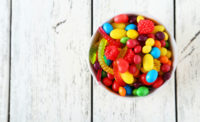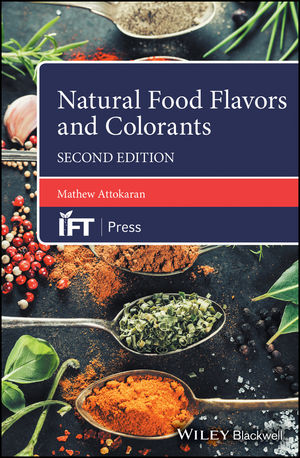COVID-19 has put a spotlight on two senses most people used to take for granted: smell and taste. The two are interconnected, but as many people suffered from lingering losses or changes in smell and taste after having COVID-19, the pandemic also put a spotlight on something else: Most people don’t seem to know much about why we smell and taste foods the way we do.
FONA, an Illinois-based flavor company, recently released a report highlighting 10 variables that can affect how someone experiences the taste of food — and why even the same person can taste food differently on different days.
The report’s authors — Katie Buss, director of sensory; and Ashley Rakow, senior sensory Scientist — explain that “from an individual’s age to the temperature of the food or drink, there are many factors that can alter taste perception.”
Below, Buss and Rakow break down the 10 variables, ranging from age to COVID-19 and even the timing of a meal. To receive a free copy of the full report, and for more information on tastings, visit FONA’s website.
1. Age
As you age, taste discrimination tends to decrease. Around age 45, taste buds begin to degenerate, and in your late 50s, taste loss becomes apparent, with sour perception less affected than the other tastes. In fact, in the elderly, taste thresholds for sweet, salt and bitter are 2.5 times higher than in younger consumers. To put in perspective, at age 20 or 30, you might only need one teaspoon of sugar in your coffee, and at age 75 you may need three teaspoons of sugar to get the same perceived sweetness.
2. Hunger
Whether you’re overly hungry or satiated, your preference and discrimination abilities are often compromised. Hunger affects how food tastes by making consumers more sensitive to sweetness and saltiness, meaning those foods and beverages will often taste more impactful. This can be a downfall of many dieters as they reach for sweet or salty foods which may not be the healthiest options. Bitterness perception, however, is not affected by hunger.
3. Meal Timing & Choice
Meal timing and choice also plays a role in taste perception. Depending on the meal, sensitivity is reduced for between one and four hours after eating or drinking. For example, A spicy/hot meal such as enchiladas will have a greater effect than a bland meal such as oatmeal and milk.
4. Smoking
Smoking can damage nerve endings responsible for our sense of smell and taste. When smoking, taste buds come in contact with chemical compounds that decrease the taste buds’ ability to register salty, sweet, sour and bitter tastes. But in as few as two days after quitting, these nerves begin to heal and a person may experience that their sense of smell and taste is stronger than before.
When we’re tasting, we’re really using all of our senses. Though you may think you’re just engaging taste — smell, mouthfeel, texture, hearing and more impact our ability to accurately describe the flavors and tastes a consumer is experiencing.
5. Taste Experiences/Upbringing
Consumer taste experiences that are influenced by genetics, location, cultural differences, commonly consumed flavors, dishes and more can impact taste perception. Due to this, you may be more sensitive to certain tastes and flavors than another individual.
6. Current Health Status
The status of your health and a variety of health conditions from the common cold to pregnancy, anorexia and more can also impact your taste. During pregnancy, nearly two-thirds of women experience changes in taste. Pregnant women have also been found to have a reduced sensitivity to salty tastes, which may be the body’s way of ensuring increased salt intake during pregnancy.
In addition, people with cancer and anorexia have reduced taste sensitivity as the result of their compromised physical condition. Cancer patients have reported that taste changes return to normal after treatment is completed.
7. COVID-19
When suffering from a cold, individuals frequently complain that they have lost their sense of taste. In reality, they have lost their sense of smell. Obstruction of air passages reduces olfactory perception, a key component of how we taste.
In fact, our nose does more identifying of flavor than our mouth does. Research shows that around 80 percent of what we taste actually comes from smell.
Similarly, we’ve seen this correlation to smell and taste with those who have suffered from COVID-19. Many patients have suffered from loss of both taste and smell, which will in turn negatively impact their ability to perceive the flavor of the foods and beverages they consume. Although research does not yet fully understand the long-term impacts, COVID-19 patients have reported taste/smell loss for varying lengths of time.
Interestingly enough, our nose does more identifying of flavor than our mouth does. Research shows that around 80 percent of what we taste actually comes from smell.
8. Temperature
Taste buds can be impacted by both high and low temperatures. Increasing temperature appears to increase the response to sweetness and decrease it to saltiness and bitterness. Decreasing temperature appears to increase the response to bitterness and decrease the response to sourness.
9. Adaptation
Adapting to taste reduces sensory acuity, or how sensitive a person is to a certain taste, thus preventing you from detecting differences between stimuli. Therefore, the order in which you taste samples during a sensory test is important. Tasting a strong sample, then a weak one results in adaptation. The opposite order, first weak then strong, should not affect taste sensitivity. With short waits between samples (three minutes or so), most effects of adaptation should dissipate. There are almost no issues when two stimuli have different taste qualities.
10. Taste Medium
The medium in which you are tasting plays a role in how you taste. In fact, the taste buds can only detect flavors that are dissolved with moisture. You cannot taste a dry substance with a dry tongue. And generally, increased viscosity reduces tastes sensitivity, meaning it’s easiest to detect tastes in liquid state, harder in foams and more difficult in gels. This explains why water is the best medium for sensitivity tests.









